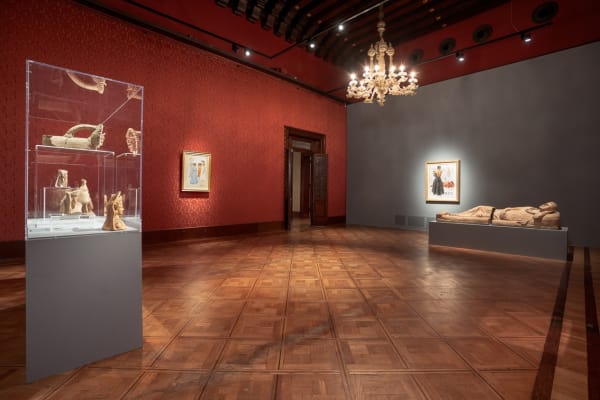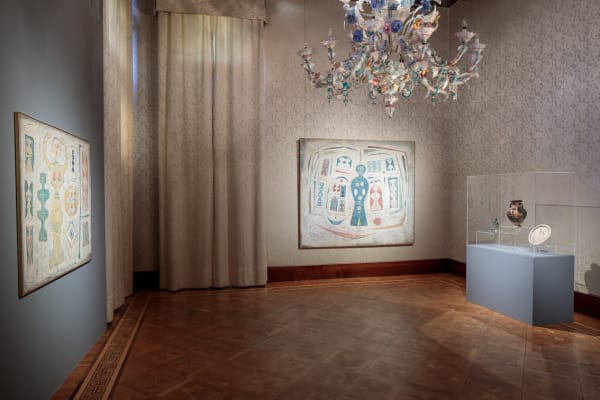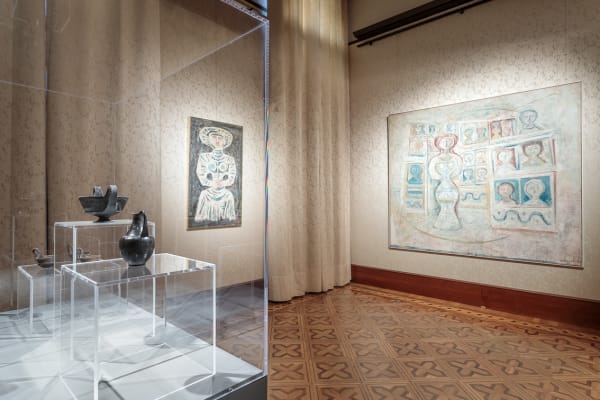As part of ACP - Art Capital Partners, Maggiore gam has presented in the rooms of the noble floor of ACP – Palazzo Franchetti, a profound dialogue between Massimo Campigli and the Etruscans, realized in collaboration with the Italian Ministry of Culture: Soprintendenza Archeologica Belle Arti e Paesaggio per l'Area Metropolitana di Roma, la Provincia di Viterbo e l'Etruria Meridionale.
The deliberately archaic compositions realized by Massimo Campigli, well represented in the exhibition with paintings ranging from 1928 to 1966, rediscover the origin of their deeper inspiration in the displayed Etruscan finds, establishing with them a natural sharing of atmospheres, signs and colours. Starting from the famous visit to the Etruscan Museum of Villa Giulia in Rome in 1928 we see a sort of return to a primordial purity in Campigli's art, an ancient flavour made of soft colours as if they were painted in a fresco and so similar to how time gave the Etruscan images back to us, of shapes moulded according to the drawing of votive statues or amphoras, of female figures with hourglass shaped busts which turn into timeless images. The typological richness of the finds presented in the exhibition – from pots to figurines, from jewels to sarcophagi, etc. - let us trace an alphabet and a universe of links which, starting from general evocations, are proposed as precise references in the exhibition's different sections: the first one is dedicated to the human figure, divided into men and women; the second one to animals, made of birds, horses, wild animals and lastly the third one to shapes and geometries. Many finds are undisclosed, and come from important recovery operations of archaeological material, even from famous international museums, now in the availability of the Soprintendenza Archeologica Belle Arti e Paesaggio per l'Area Metropolitana di Roma, la Provincia di Viterbo e l'Etruria Meridionale. Two precious terracotta sarchofagi from the Museo Civico of Viterbo certainly deserve a special note.
Through the call of these expressive languages belonging to a glorious civilization of the past, the art of Campigli reveals a profound originality in the coexistence between ancient splendours and current events, involving the visitor in a dimension where time seems to stop or to quietly flow in a imperturbable stillness. It shows us a twentieth century which is contemporary to the most ancient Mediterranean eras, writing a very interesting page of what the archeologist Massimo Pallottino defined as an “Etruscan novel”, a myth which since the Reneissance keeps on exerting a strong fascination from generation to generation.



